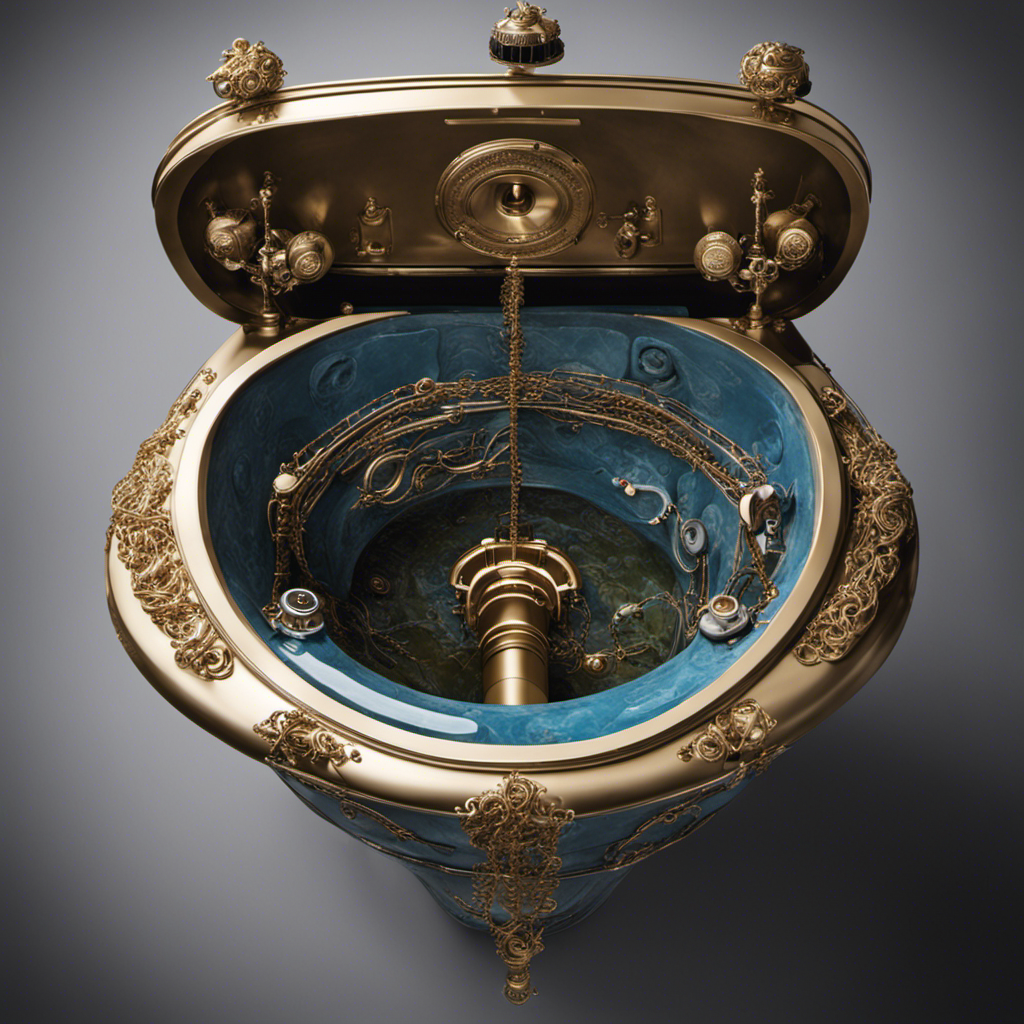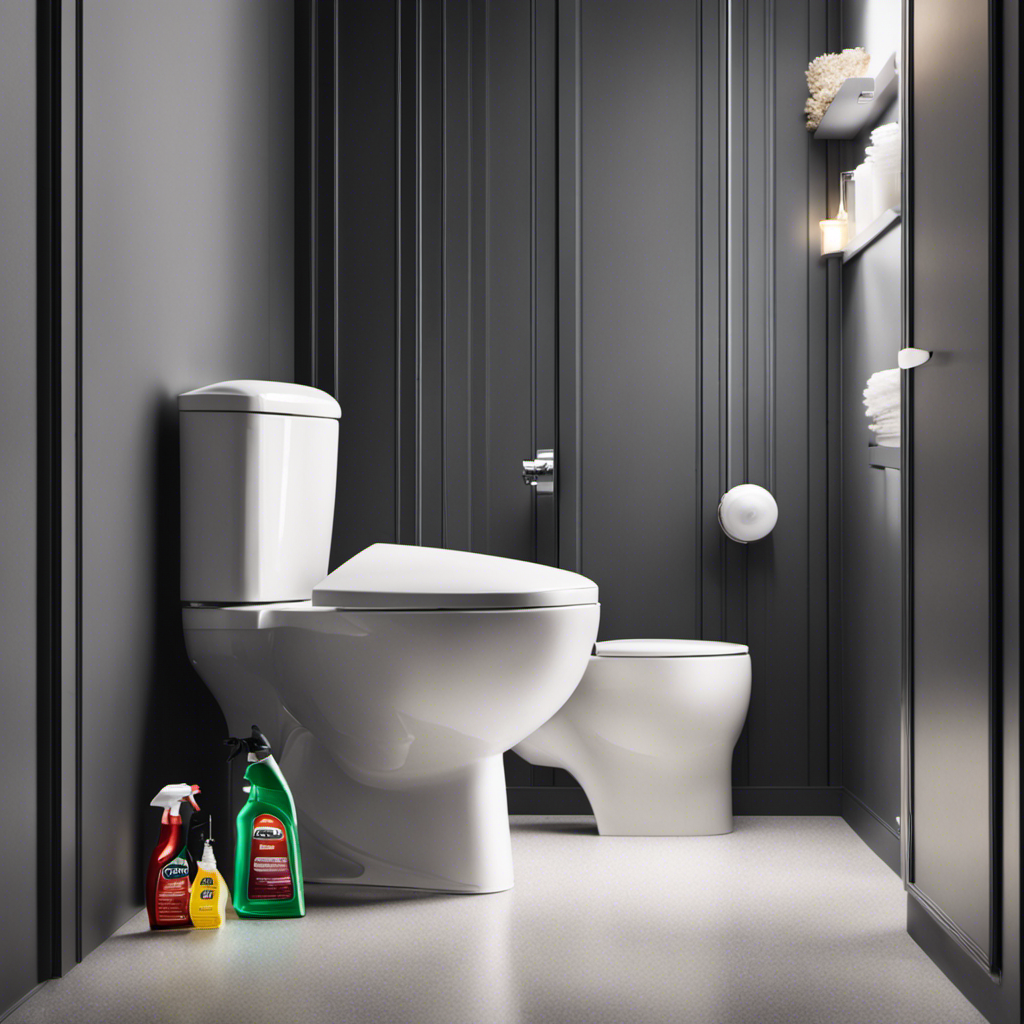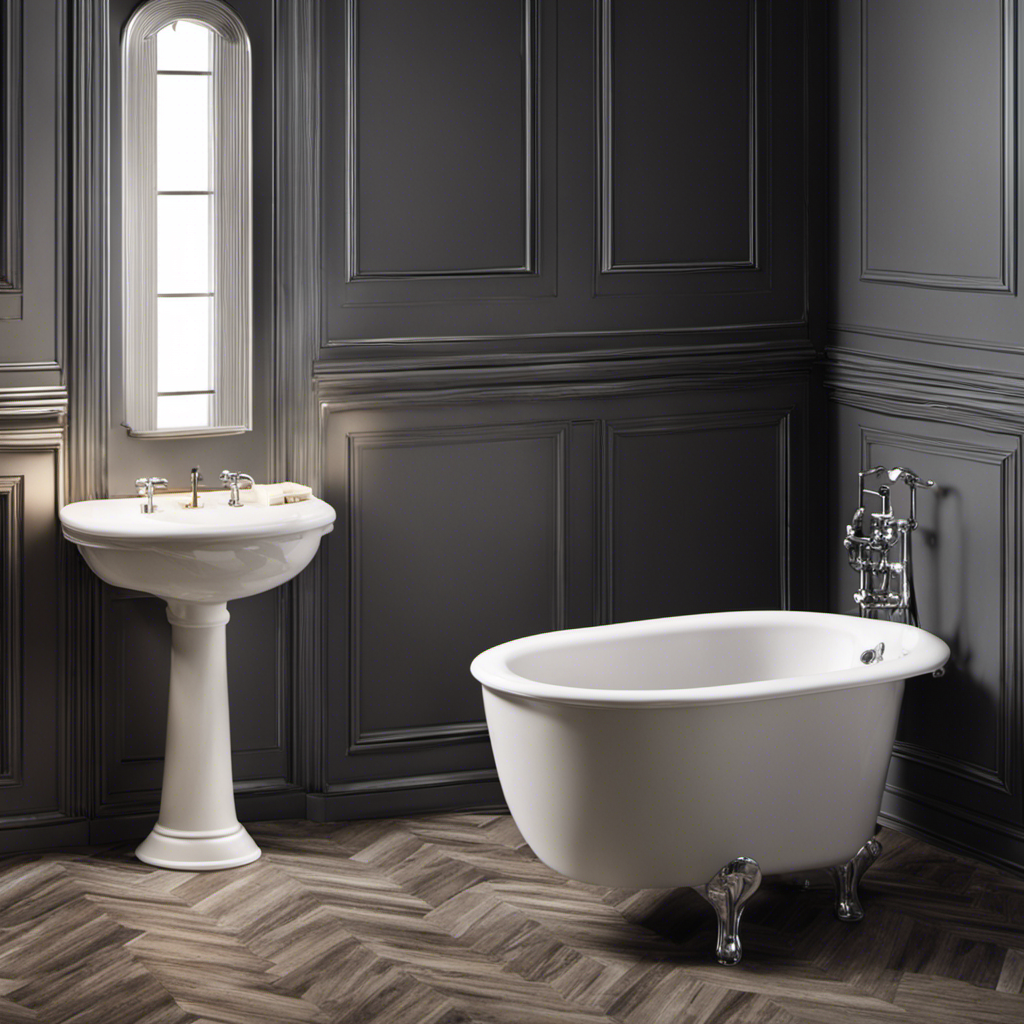Do you ever wonder why your toilet just won’t stop running? It’s frustrating, isn’t it? Well, there could be a few common issues causing this pesky problem.
From a faulty flapper valve to a malfunctioning fill valve, there are a variety of culprits to consider. And let’s not forget about problems with the float and leaking toilet components.
In this article, we’ll dive into the causes behind a running toilet and provide you with the knowledge to fix it.
Key Takeaways
- Faulty flapper valve can cause continuous water flow, incomplete flush, water leaks into the bowl, and a drop in water level in the tank.
- Malfunctioning fill valve can result in a water level that is too low or too high, and troubleshooting or replacing the fill valve is important.
- Problems with the float being too high, too low, or damaged can affect the water level and function of the toilet, and adjusting the float is necessary.
- Leaking toilet components, such as a faulty tank, loose or worn-out seals, or a malfunctioning water supply valve, should be addressed promptly to prevent further issues, and regular maintenance and inspection are beneficial.
Common Toilet Running Issues
One common issue that causes a toilet to keep running is a faulty flapper valve. The flapper valve is a rubber seal that sits at the bottom of the toilet tank and is responsible for controlling the flow of water into the bowl.
Over time, the flapper valve can become worn out or damaged, leading to water continuously leaking from the tank into the bowl. To troubleshoot this problem, start by turning off the water supply to the toilet and inspecting the flapper valve for any signs of wear or damage.
If necessary, replace the flapper valve with a new one, ensuring a proper seal. Regular toilet maintenance, such as checking and replacing faulty flapper valves, can help prevent running toilets and save water in the long run.
Faulty Flapper Valve
The faulty flapper valve is often responsible for a running toilet. This small but important component is located in the toilet tank and is responsible for controlling the flow of water into the bowl. When the flapper valve becomes worn or damaged, it can cause water to continuously leak from the tank into the bowl, resulting in a running toilet. Troubleshooting a running toilet often involves checking and replacing the flapper valve. To help you understand the importance of this component, here is a table highlighting the common issues that can arise with a faulty flapper valve:
| Issue | Cause | Solution |
|---|---|---|
| Continuous water flow | Worn flapper valve | Replace flapper valve |
| Incomplete flush | Flapper valve doesn’t lift fully | Adjust or replace flapper valve |
| Water leaks into bowl | Flapper valve doesn’t seal tightly | Adjust or replace flapper valve |
| Water level drops in tank | Flapper valve doesn’t close properly | Adjust or replace flapper valve |
Malfunctioning Fill Valve
To fix a malfunctioning fill valve, you’ll need to adjust or replace it if it isn’t filling the toilet tank properly. The fill valve, also known as the ballcock, is responsible for regulating the water level in the tank after each flush.
If you notice that your toilet keeps running continuously or doesn’t fill up properly, it’s likely that the fill valve is the culprit. Troubleshooting the fill valve involves a few simple steps.
First, check if the water level is too low or too high; adjusting the float arm can help fix this issue. If that doesn’t work, you may need to replace the fill valve entirely. This process requires turning off the water supply, draining the tank, and then installing a new fill valve.
Problems With the Float
If your toilet constantly runs or doesn’t fill up properly, it’s likely due to problems with the float. The float is a small plastic or metal device that controls the water level in your toilet tank. When the water level drops, the float drops as well, opening the fill valve to allow water to enter the tank. Once the water level reaches a certain point, the float rises and shuts off the fill valve. However, if the float is not adjusted properly or is damaged, it can cause issues with the water level, leading to a constantly running toilet or a toilet that doesn’t fill up properly.
To adjust the float, you can refer to the table below for guidance:
| Problem | Solution |
|---|---|
| Float is too high | Bend the float arm downwards to lower the float |
| Float is too low | Bend the float arm upwards to raise the float |
| Float is damaged | Replace the float with a new one |
Leaking Toilet Components
Leaking toilet components can lead to water damage and higher water bills if not addressed promptly. It is important to understand the potential causes of these leaks and take immediate action to prevent further damage.
Here are three common reasons why toilet components may be leaking:
-
Faulty toilet tank: The toilet tank is responsible for holding and releasing water during each flush. If the tank is cracked or damaged, it can cause water to leak continuously into the bowl. This not only wastes water but can also lead to water stains and damage to the surrounding area.
-
Loose or worn-out seals: The seals around the toilet tank and water supply connection can deteriorate over time, leading to leaks. These leaks may be small at first, but they can worsen over time and cause significant water damage if left unattended.
-
Malfunctioning water supply valve: The water supply valve controls the flow of water into the toilet tank. If this valve becomes stuck or worn out, it can cause a continuous flow of water into the tank, resulting in a running toilet and increased water bills.
To prevent water damage and save on water bills, it is essential to promptly address any leaks in your toilet components. Regular maintenance and inspection can help identify and resolve these issues before they become costly problems.
Conclusion
So there you have it! Now you know what causes a toilet to keep running. Whether it’s a faulty flapper valve, a malfunctioning fill valve, problems with the float, or leaking toilet components, these issues can all lead to a continuously running toilet.
By understanding these common problems, you can take the necessary steps to fix them and prevent further water waste. Remember, a little knowledge goes a long way when it comes to keeping your toilet running smoothly.
Happy fixing!










